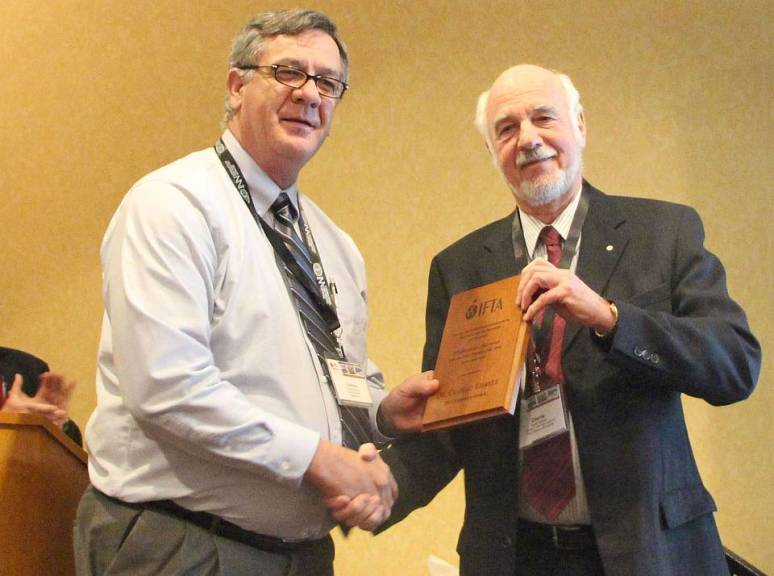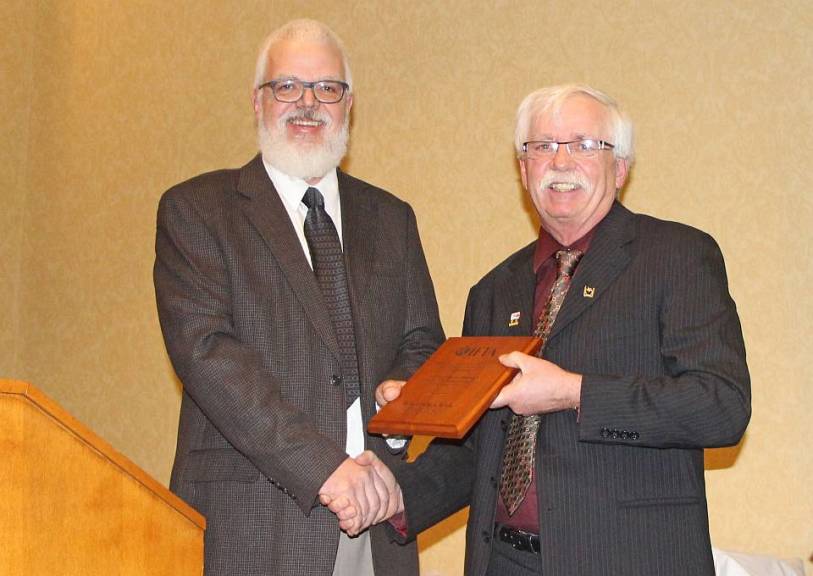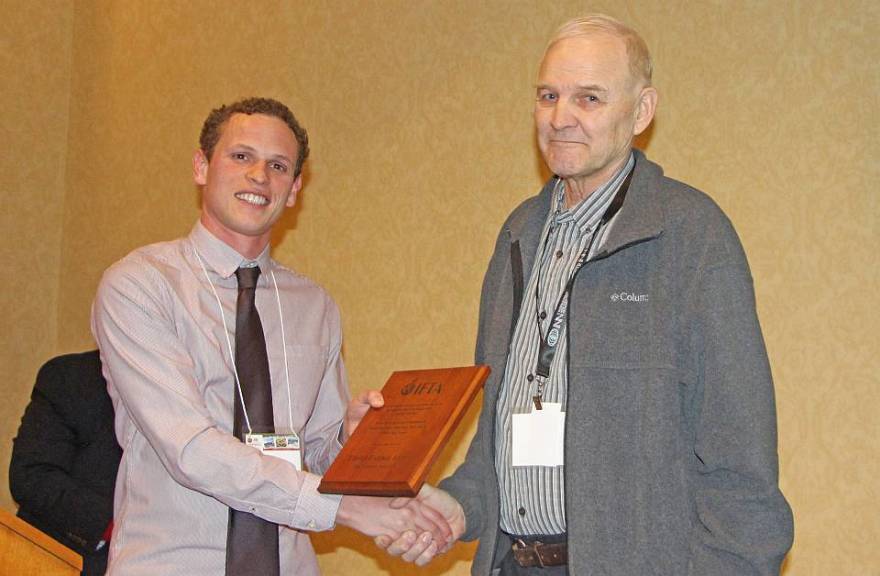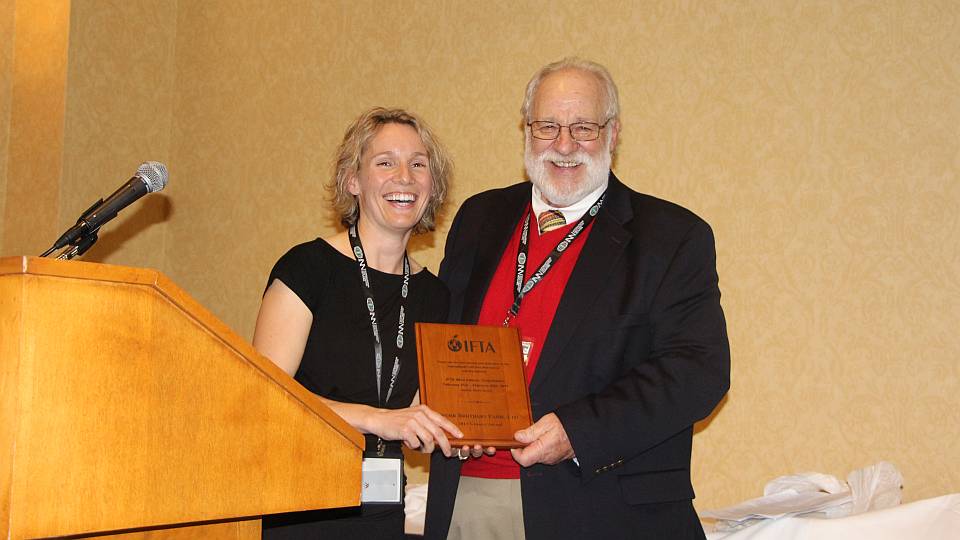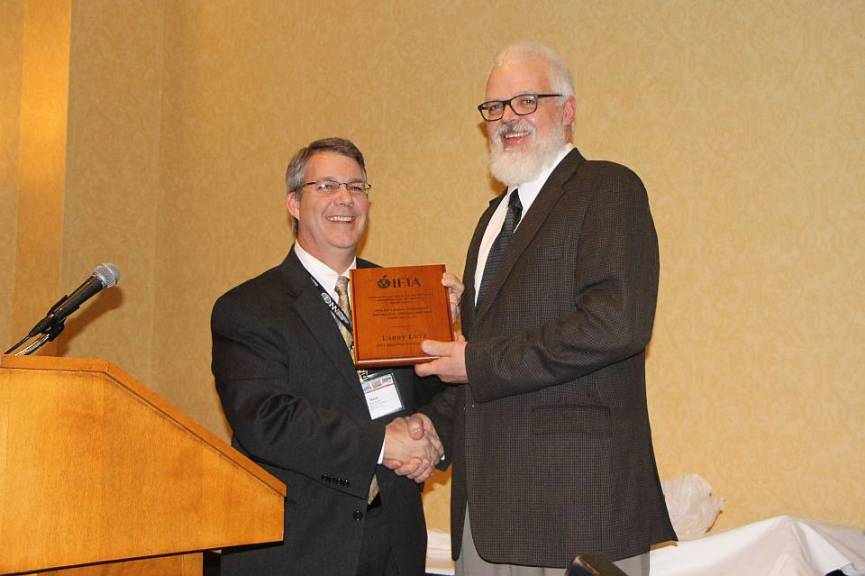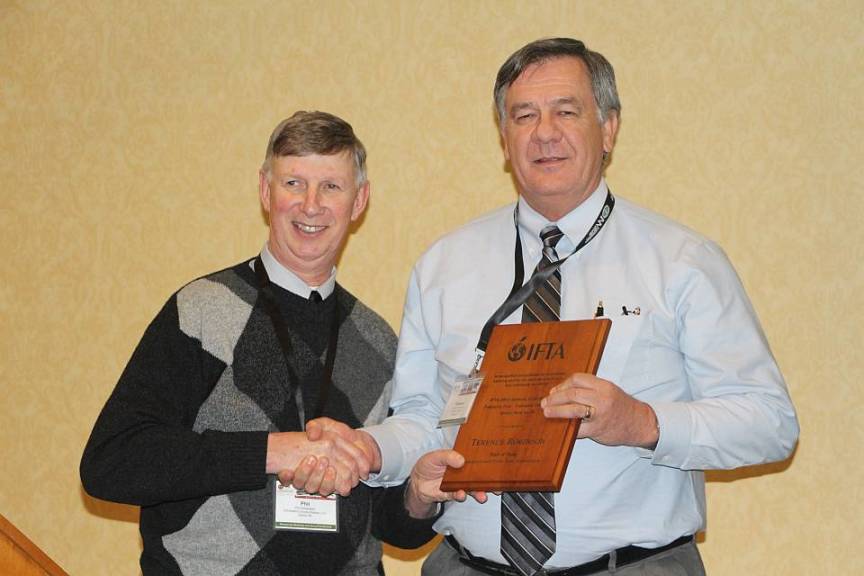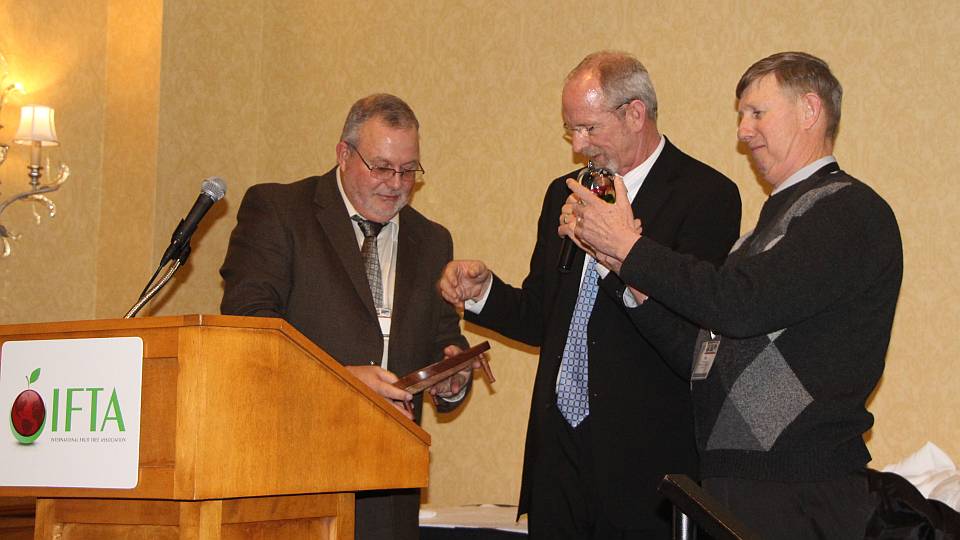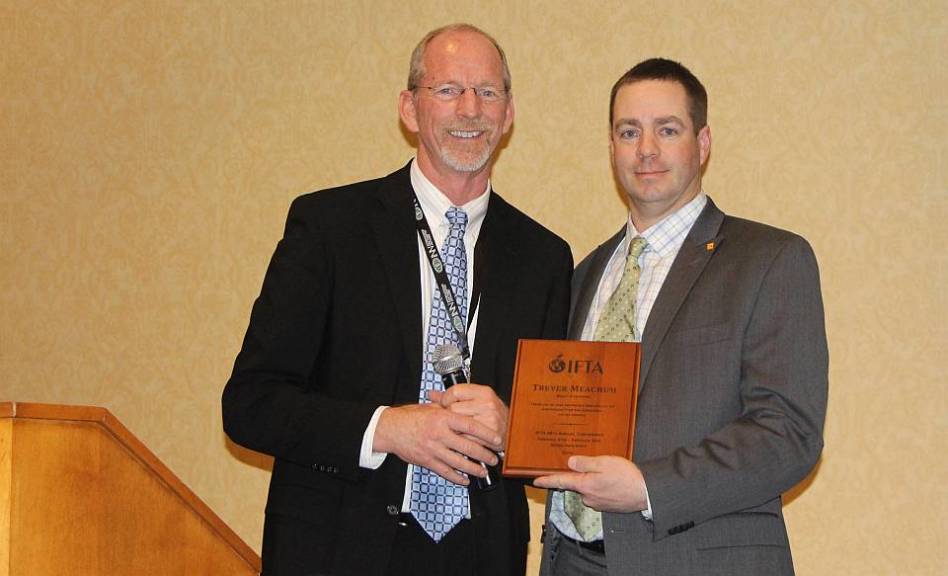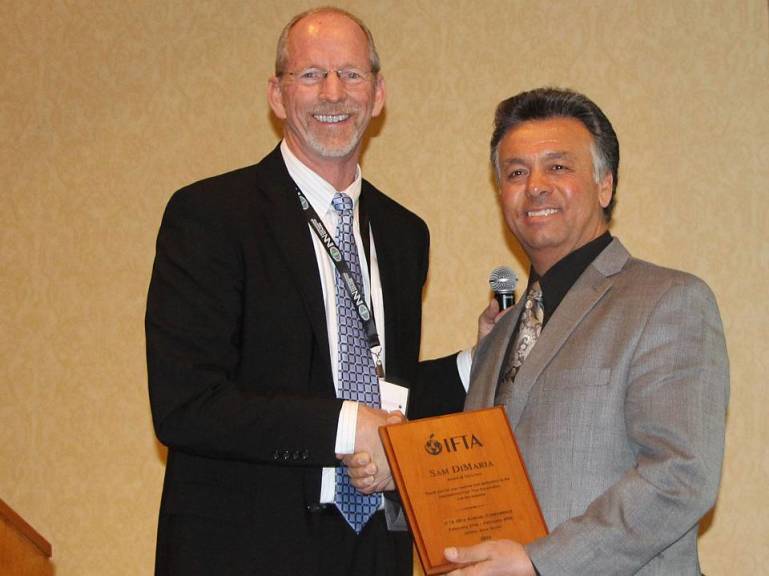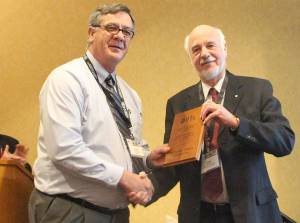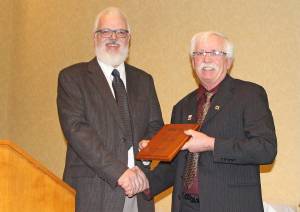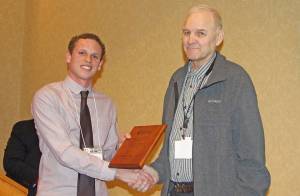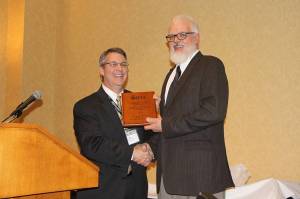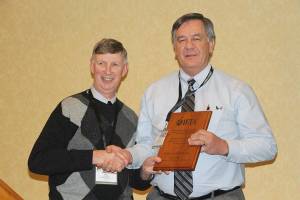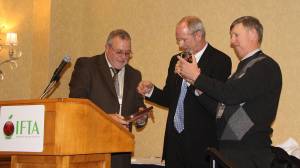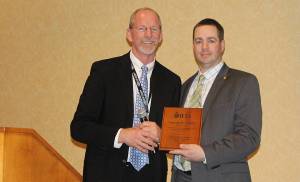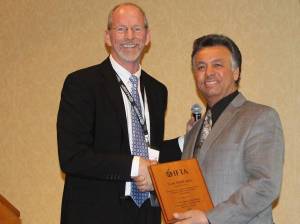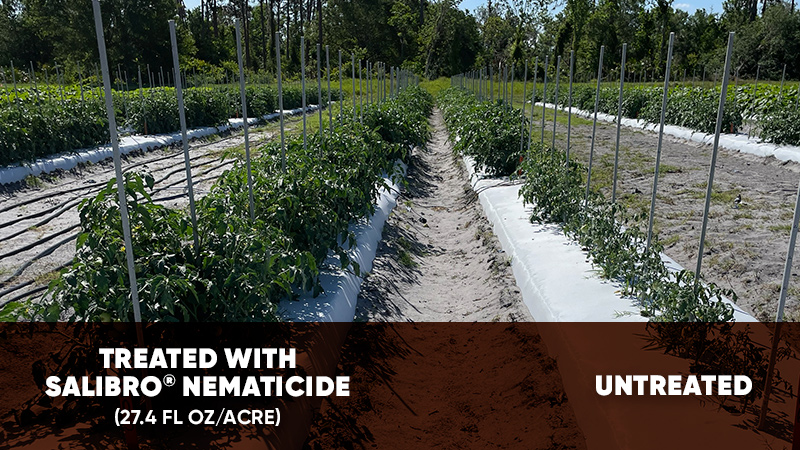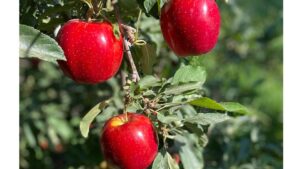From The Road: IFTA Conference Day 3
[blackoutgallery id=”70768″]
Do you know what apples your local grocery store is selling? If you don’t, you should, says John Rice of Rice Fruit Company. He spoke on the landscape of retail apples during sessions at the International Fruit Tree Association’s (IFTA) annual conference.
Rice, the first American and Western Fruit Grower Apple Grower of the Year, said whenever he has time in a new town he goes to see what apples are for sale and for what price. It’s important to know what the market for apples is like because a lot has changed over the years.
When Rice, a seventh-generation apple grower, started working for his family’s company in 1975, the most expensive apple in the store was Red Delicious at 99 cents a pound. Today, the most expensive apple in the store is Honeycrisp, and the least expensive apple in that store is – you guessed it – Red Delicious at 99 cents a pound.
On this display was Honeycrisp on one end, Gala on the other, and in between was a mixture of Braeburn, Fuji, Pink Lady, Jonagold, Lady Alice, Kiku, Jazz, and some Red and Golden Delicious.
Rice said most of those apples were from Washington, with the local apple varieties on the other side of that apple display.
The troubling part is your consumer has only tried a handful of those varieties.
“The average shopper is thinking ‘I only buy Honeycrisp or Gala,’” he said.
With all those apple varieties on sale, if your consumer is only familiar with a third of what’s in those displays, and apple crop sizes continue skyward, apple growers should be focusing more on marketing all these new varieties.
He listed off approximately 50 or so names of all the new varieties from Ambrosia to Zestar!.
So who is driving all these new varieties? It’s not the consumer. It’s not the retailers, who have no idea where to put the SnapDragons and Cosmic Crisps among the already crowded displays.
“The consumer is not asking for 50 new varieties,” Rice says. “They wanted 2 to 3 varieties better than Red Delicious.”
These varieties are being driven by the producers, Rice says.
“Growers want to plant the next Honeycrisp,” he says.
But none of these new varieties are going to be the next Honeycrisp if your consumers haven’t tried them. And they won’t try them if you don’t promote your apples.
“We are spending millions and millions of dollars on these new varieties – how to grow them, store them, etc.,” Rice says. “How much are we spending on marketing?”
Direct marketers have an advantage in being able to sell these new varieties personally. Rice says as you’re putting new varieties in the ground, think about how you’re going to sell them. Because, with a lot of apples coming in the future, we’ve got to find a way to brand and market these apples to get them in consumer’s hands.
IFTA Honors Its Own
During Monday night’s annual IFTA banquet, Cornell University’s Terence Robinson was not only honored for his time on the IFTA board of directors, but was also inducted into the IFTA Hall of Fame. When honored, Robinson, obviously moved by the recognition, said he’s just trying to help fruit growers. But he couldn’t leave the stage without doling out a little bit of homework for growers, “I do want to ask, in the three years I’m gone (on sabbatical), could you get rid of those crummy orchards and plant high density?”
More Updates
For more from IFTA, be sure to check out Christina Herrick’s Twitter feed @HerrickAFG, where she will be sending updates from all the sessions and catch the April issue of American Fruit Grower magazine for a recap of the conference. Missed one of the recaps? Check out Day 1, Day 2, Day 4.





